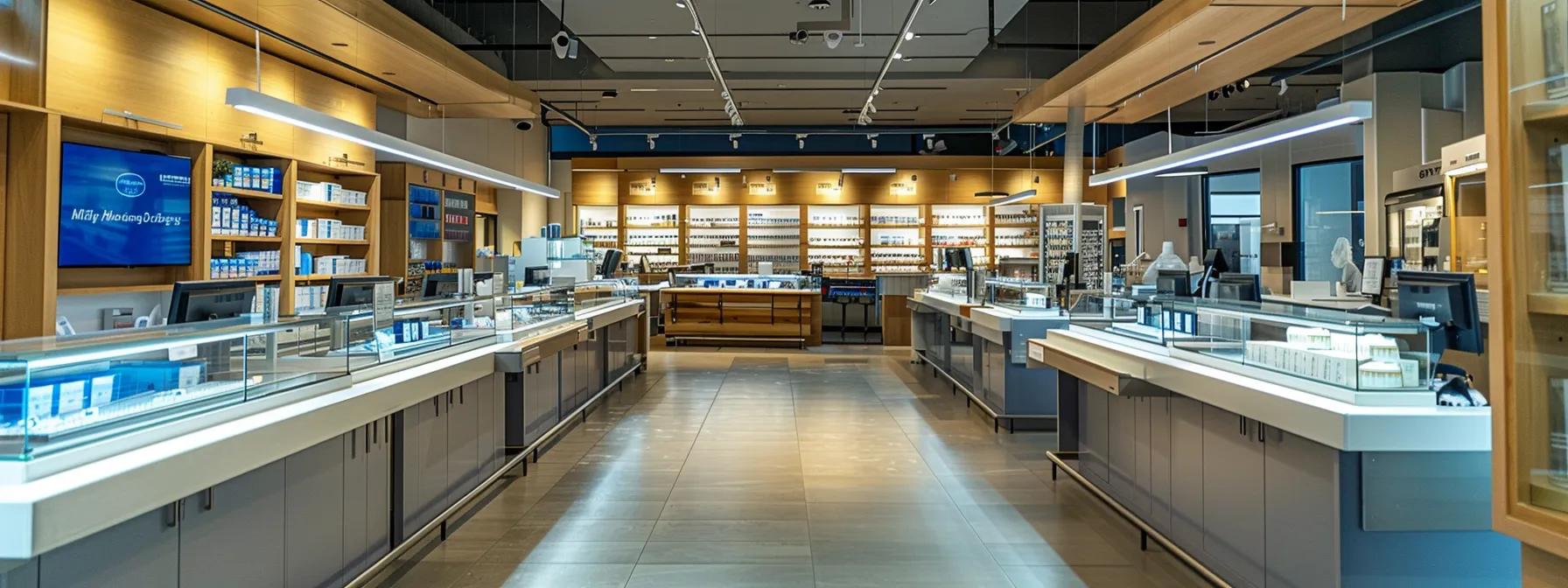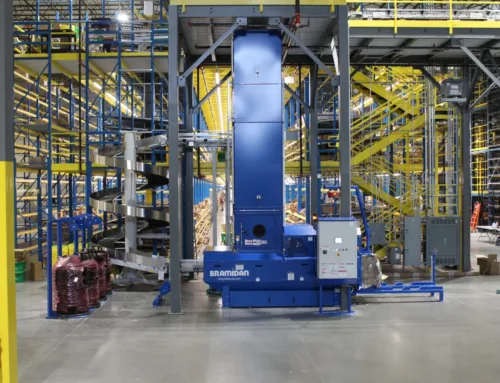
In compounding pharmacies, strict adherence to equipment standards is crucial for regulatory compliance and safe medication preparation. In addition, facility management can benefit from effective logistics systems, such as Pallet Jack Sales, which help streamline the movement of bulky supplies. This guide explains various compounding pharmacy equipment types, supplies, and advanced technologies, and covers how to choose and maintain instruments for precise formulations, safe handling of hazardous drugs, and quality assurance.
Weighing and Measuring Compounding Pharmacy Equipment Types
Accurate measurement is the foundation for effective compounding. Scales, balances, and volumetric devices must be precisely calibrated to ensure proper dosage and compliance with cGMP and USP standards.
How do we ensure accuracy with weighing equipment?
Analytical balances and digital scales are calibrated regularly with certified weights. This practice minimizes human error and maintains strict environmental monitoring protocols in the compounding area.
What are the benefits of using high-precision measuring instruments?
High-precision instruments enhance dosage consistency and reduce waste. Regular calibration improves operational precision—critical for handling hazardous drugs and ensuring each compounded dose meets quality standards.
How are volumetric measuring devices integrated?
Devices such as pipettes and graduated cylinders measure liquid components accurately and are integrated into both sterile and non-sterile workflows. They support contamination control and ensure uniform distribution of active ingredients.
How do technicians verify measurement results?
Technicians maintain detailed calibration logs and perform periodic proficiency tests to confirm that measurements meet USP guidelines and regulatory safety standards.
Mixing and Blending Compounding Pharmacy Equipment Types
Mixers, vortex devices, and homogenizers ensure uniform blending, which is essential for both emulsions and suspensions.
How do mixing devices support uniformity in formulations?
By using controlled agitation, mixing devices prevent settlement and achieve homogeneity. They are critical for both topical and transdermal applications, ensuring formulations have consistent active ingredient distribution.
What types of mixers are used in pharmacy compounding?
Common mixers include vortex mixers for quick, forceful agitation and mechanical blenders for larger batches. Specialized planetary mixers are employed for highly viscous substances, ensuring therapeutic consistency.
How is blending optimized in compounding processes?
Adjustable speed settings and time-controlled cycles allow pharmacists to consistently replicate ideal blending conditions. Modern mixers also log batch performance data to optimize efficiency based on material viscosity, temperature, and ambient humidity.
What safety measures are employed during mixing?
Containment hoods, disposable protective gear, and environmental monitoring systems are integrated with mixing equipment to reduce cross-contamination and protect operators from hazardous exposures.
Molds and Presses as Compounding Pharmacy Equipment Types
Molds and presses shape dosage forms such as capsules and tablets, ensuring both aesthetic appeal and therapeutic consistency.
How do molds and presses contribute to compounding precision?
Molds ensure uniform shape and size while presses apply controlled compression to achieve predictable dissolution rates. Digital controls in advanced presses allow for precise pressure adjustments, ensuring batch-to-batch consistency.
What are the common types of molds available?
Both silicone and stainless steel molds are used, alongside custom-designed formats for unique prescriptions. These adaptable molds support scalable production and can be used with both manual and automated processes.
How do press technologies enhance compounding efficiency?
Automated tablet presses with feedback systems regulate compression force, enhancing dosage uniformity and patient safety. Computerized logs facilitate performance tracking and predictive maintenance to minimize downtime.
How is maintenance of molds and presses managed?
Regular cleaning, sterilization, and scheduled inspections prevent cross-contamination and ensure the integrity of dosage forms. Strict maintenance protocols help pharmacies meet quality assurance and regulatory standards.
Containment and Safety Compounding Pharmacy Equipment Types
Containment devices, such as biosafety cabinets and fume hoods, are essential to protect both personnel and products from contamination.
How do containment systems protect compounding areas?
HEPA filters and controlled airflow in biosafety cabinets isolate the compounding environment from external contaminants, ensuring both environmental safety and product purity.
What role do fume hoods play in pharmacy compounding?
Fume hoods capture and filter hazardous vapors and solvents, minimizing exposure risks for pharmacy staff. They are designed for continuous operation in line with occupational safety standards.
How is equipment decontamination maintained?
Strict SOPs require regular cleaning and disinfection of containment devices. Documented protocols ensure that surfaces and filters remain free of microbial contamination, supporting regulatory inspections.
How do containment strategies integrate with workflow efficiency?
Strategically placed containment equipment minimizes process interruptions and streamlines workflow while protecting against cross-contamination.
Specialized Compounding Pharmacy Equipment Types for Different Formulations
Unique formulations sometimes require specialized devices for optimal compounding.
How do specialized devices support pharmaceutical formulation?
Devices like homogenizers and capsule filling machines are tailored for specific dosage forms. They ensure the correct viscosity, particle size, and distribution—essential for bioavailability and therapeutic effect.
What parameters determine the choice of specialized equipment?
Selection criteria include formulation type, production scale, and ingredient properties. Sterile formulations may need laminar flow workstations, while non-sterile processes benefit from automated mixers.
How do capsule filling machines enhance dosing precision?
Automated capsule filling machines ensure each capsule contains an exact amount of active ingredient, eliminating manual error and ensuring dosage consistency with digital monitoring systems.
How does one verify the performance of specialized devices?
Routine testing and validation compare output to target values. Detailed performance logs support both internal quality assurance and external audits.
Selecting Appropriate Compounding Tools and Instruments
Choosing the right tools is vital for quality and regulatory compliance.
How do we assess needs for non-sterile compounding pharmacy equipment types?
Non-sterile equipment selection is based on formulation type, budget, and ease of cleaning. Durability and precision are prioritized without the need for aseptic processing.
What criteria are used for choosing sterile compounding pharmacy equipment types?
Sterile equipment must meet ISO cleanroom and USP standards. Ease of sterilization, compatibility with disinfectants, and reliable maintenance are key factors, despite higher costs.
How do material considerations influence equipment selection?
Equipment materials must resist chemical corrosion and avoid adverse interactions with ingredients. Compatibility assessments help prevent harmful leaching and maintain product integrity.
What processes ensure proper calibration and maintenance?
Regular calibration, documented maintenance schedules, and internal audits guarantee that every instrument operates safely and accurately in line with regulatory standards.
How can quality compounding supplies be sourced effectively?
Pharmacies source supplies from vetted manufacturers with a history of FDA-approved products, reducing supply chain interruptions and ensuring equipment meets stringent criteria.
Key Supplies for Pharmaceutical Compounding Processes
Supplies such as disposables, glassware, and personal protective equipment (PPE) are as critical as the equipment itself.
What disposable supplies are essential in compounding pharmacy settings?
Gloves, syringes, and paper filters are used to prevent cross-contamination. Single-use supplies ensure sterility and minimize infection risks, meeting occupational safety and health requirements.
What types of glassware and plasticware are used in compounding?
Beakers, flasks, and high-grade plastic containers must resist chemical corrosion and thermal shock, providing accurate volume measurements and consistent mixing.
How does personal protective equipment (PPE) contribute to compounding safety?
PPE such as gowns, face shields, and respirators protect technicians from chemical and biological hazards, reducing exposure to splashes and aerosols as per OSHA standards.
What cleaning and sanitization supplies are used for compounding areas?
Antimicrobial wipes, filtration systems, and disinfectants maintain a contaminant-free workspace, ensuring both equipment and surfaces remain sterile during operations.
How are packaging and labeling supplies integrated into pharmaceutical compounding?
Automated packaging and child-resistant labeling systems ensure accurate dosage instructions and expiration dates, completing the compounding workflow reliably.
Advanced Compounding Pharmacy Equipment Technologies
Advanced technologies improve automation, precision, and efficiency in compounding.
How do automated compounding devices benefit pharmacies?
These devices reduce manual errors and streamline complex dosing formulas through computer control, significantly enhancing quality assurance and operational throughput.
What is the role of ointment mills in topical preparations?
Ointment mills create uniform creams and gels by controlling dispersion levels, reducing preparation time while maintaining consistency.
How do homogenizers improve emulsions and suspensions?
By forcing mixtures through narrow channels at high pressure, homogenizers reduce particle size and improve uniformity, leading to enhanced bioavailability.
What advantages do capsule filling machines offer for dosing precision?
Automated capsule filling machines ensure exact dosing and provide real-time data for quality monitoring, suitable for both small- and large-scale production.
What emerging technologies are shaping the future of compounding pharmacy equipment?
Innovations like 3D printing, AI-powered inventory management, and IoT sensors for environmental monitoring are setting new standards for efficiency, dosage accuracy, and contamination control.
Regulatory Standards for Compounding Pharmacy Equipment
Regulatory standards, including USP and state board guidelines, ensure equipment safety and quality.
How do USP guidelines impact compounding pharmacy equipment types?
USP standards require routine calibration, verification, and aseptic techniques. These standards help maintain equipment within strict tolerances, ensuring quality assurance.
What state board of pharmacy requirements apply to equipment?
State boards mandate documented maintenance logs, calibration records, and regular inspections to minimize equipment failure and ensure continuous regulatory compliance.
How is equipment maintenance managed for compliance and safety?
Scheduled cleaning, calibration, and performance testing, along with documented audits, ensure that all equipment meets internal quality controls and external regulatory standards.
What documentation practices are critical for compounding equipment?
Detailed records of calibration, maintenance, and performance tests provide audit trails that demonstrate compliance and support prompt corrective actions if needed.
How is training on equipment use implemented in pharmacy settings?
Comprehensive training on equipment operation, emergency procedures, and maintenance protocols ensures effective and safe usage, integrating the latest regulatory and technological updates.
Optimizing Workflow With Efficient Compounding Pharmacy Equipment
A well-organized compounding workspace boosts efficiency, accuracy, and safety.
How is the compounding workspace organized with modern equipment?
Designated zones for weighing, mixing, and packaging, along with ergonomic workstations and inventory management systems, minimize movement and reduce cross-contamination risks.
What are the best practices for streamlining compounding processes?
Standardized operating procedures, quality assurance systems, and real-time monitoring reduce delays. Automated reminders for maintenance and supplies further enhance workflow.
How does proper equipment handling reduce contamination risks?
Adhering to PPE protocols, regular sanitization, and controlled airflow measures, combined with smart placement of containment devices, minimizes cross-contamination even during high-volume production.
What strategies improve accuracy with precision compounding equipment?
Investing in high-precision instruments, routine calibration, and robust quality control measures ensures consistent dosage accuracy while aligning with regulatory standards.
How do future investments in equipment support compounding needs?
Upgrading to scalable, automated, and digitally monitored systems prepares pharmacies for growth, ensuring ongoing compliance and improved production efficiency while future-proofing compounding operations.
This concise guide provides an overview of critical compounding pharmacy equipment types, their functions, safety measures, and regulatory standards—all essential for maintaining quality, efficiency, and patient safety in pharmaceutical compounding.
Share This Story, Choose Your Platform!
Get In Touch
Phone: (847) 722-6942
Email: sales@end2endlogix.com
Web: end2endlogix.com


